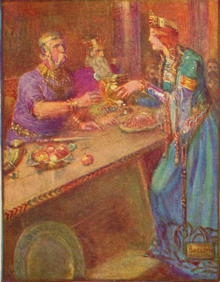
Hygelac was a king of the Geats according to the poem Beowulf. It is Hygelac's presence in the poem which has allowed scholars to tentatively date the setting of the poem as well as to infer that it contains at least some points of historical fact. Beowulf gives Hygelac's genealogy: according to the poem, he was the son of Hrethel and had two brothers Herebeald and Hæþcyn, as well as an unnamed sister who was married to Ecgtheow and was the mother of the hero Beowulf. Hygelac was married to Hygd, and they had a son Heardred and an unnamed daughter who married Eofor. When Hygelac's brother Hæþcyn was fighting with the Swedes, Hygelac arrived at Hrefnesholt one day too late to save his brother Hæþcyn, but he managed to rescue the surviving Geatish warriors, who were besieged by the Swedish king Ongentheow and his three sons. The Swedes found refuge at a hill fort but were assaulted by the Geats. In the battle, the Swedish king was slain by Eofor. After the death of his brother Herebeald, Hygelac ascended the Geatish throne. After he was killed during a raid on Frisia, Hygelac was succeeded by Heardred, according to Beowulf.

Hrólfr Kraki, Hroðulf, Rolfo, Roluo, Rolf Krage was a semi-legendary Danish king who appears in both Anglo-Saxon and Scandinavian tradition.
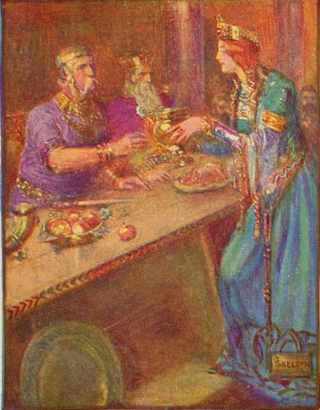
Hrothgar was a semi-legendary Danish king living around the early sixth century AD.
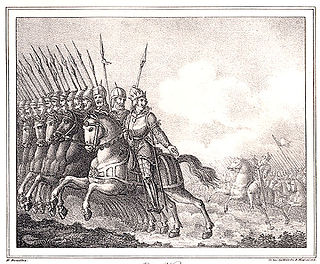
Eadgils, Adils, Aðils, Adillus, Aðísl at Uppsölum, Athisl, Athislus or Adhel was a semi-legendary king of Sweden, who is estimated to have lived during the 6th century.

Yrsa, Yrse, Yrs or Urse was a tragic heroine of early Scandinavian legend.
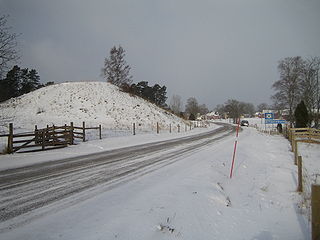
Ohthere, Old Norse Óttarr vendilkráka was a semi-legendary king of Sweden of the house of Scylfings, who is said to have lived during the Germanic Heroic Age, possibly during the early 6th century.
Onela was according to Beowulf a Swedish king, the son of Ongentheow and the brother of Ohthere. He usurped the Swedish throne, but was killed by his nephew Eadgils, who won by hiring foreign assistance.

Geatish kings, ruling over the provinces of Götaland (Gautland/Geatland), appear in several sources for early Swedish history. Today, most of them are not considered historical.
Swerting is briefly mentioned in Beowulf, where he had a son or son-in-law, Hrethel, who was the maternal grandfather of the hero Beowulf.
Eofor, son of Wonred, was a Geatish warrior in Beowulf. When the Swedes invaded Geatland (Götaland), the Geatish king Hæþcyn was killed by the Swedish king Ongenþeow. Hygelac, who became the new king, sent Eofor and his brother Wulf to fight against the hoary-bearded Swedish king. During the fight Wulf was severely wounded, but Eofor slew Ongenþeow and carried Ongenþeow's arms to Hygelac. Eofor and Wulf were not only richly recompensed, but Eofor was given the greatest possible gift for his service, the daughter of Hygelac.
Ecgþēow, Edgetho, or Ecgtheow is a character in the Anglo-Saxon epic Beowulf. He is not mentioned outside the Bēowulf manuscript, and it is not known whether he was based on a real person. He belonged to a probably Swedish family called the Waegmundings. He married the daughter of Hreðel, king of the Geats, and was the father of Bēowulf.

Hygd, introduced in line 1925 of the poem Beowulf, is the wife of King Hygelac of Geatland. She is the daughter of Hæreth.

Weohstan, Wēohstān or Wīhstān is a legendary character who appears in the Anglo-Saxon epic poem Beowulf and scholars have pointed out that he also appears to be present in the Norse Kálfsvísa.
The Wægmundings were a prominent probably Swedish clan in Beowulf. A name such as Wægmunding meant "belongs to Wægmund", i.e. they were the descendants of a man named Wægmund. This was the normal way of naming a Germanic clan.
Wiglaf is a character in the Anglo-Saxon epic poem Beowulf. He is the son of Weohstan, a Swede of the Wægmunding clan who had entered the service of Beowulf, king of the Geats. Wiglaf is called Scylfing as a metonym for Swede, as the Scylfings were the ruling Swedish clan. While in the service of the Scylfing Onela, king of the Swedes, Weohstan killed the rebel prince Eanmund and took his sword as a trophy; Wiglaf later inherited it. Weohstan belonged to the clan of the Wægmundings, the same clan Beowulf's father Ecgþeow belonged to; so Wiglaf is Beowulf's distant cousin, and his only living relative at the time of Beowulf's death.

The Wulfings, Wylfings or Ylfings was a powerful clan in Beowulf, Widsith and in the Norse sagas. While the poet of Beowulf does not locate the Wulfings geographically, Scandinavian sources define the Ylfings as the ruling clan of the Eastern Geats.

Wealhtheow is a queen of the Danes in the Old English poem, Beowulf, first introduced in line 612.

Beowulf is a legendary Geatish hero in the eponymous epic poem, one of the oldest surviving pieces of English literature.
Ingeld or Ingjaldr was a legendary warrior who appears in early English and Norse legends. Ingeld was so well known that, in 797, Alcuin wrote a letter to Bishop Higbald of Lindisfarne questioning the monks' interest in heroic legends with: 'Quid enim Hinieldus cum Christo?' - What has Ingeld to do with Christ?
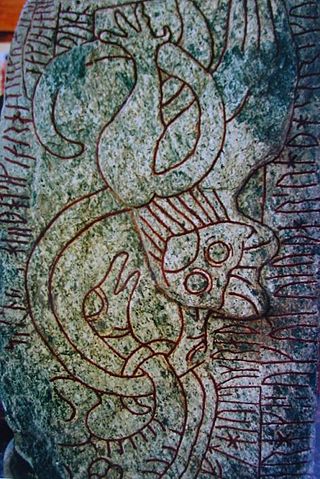
The Swedish-Geatish wars refer to semi-legendary 6th century battles between Swedes and Geats that are described in the Anglo-Saxon epic Beowulf. Little has survived of such battles in the Norse sagas, and later 11th century-13th century wars between Swedes and Geats, notably involving the Geatish clans House of Stenkil and House of Sverker, are referred to as Swedish civil wars.

